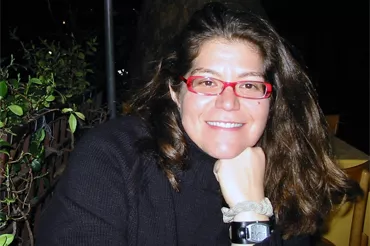Gwynn Kessler
Associate Professor
Department Chair, Religion
Religion
Contact
Affiliations: Libraries, Religion, Gender & Sexuality Studies

Background and Areas of Interest
I received my Ph.D. in Rabbinics, with a specialization in midrash, from the Jewish Theological Seminary in 2001. I have taught at the University of North Carolina at Greensboro and at the University of Florida in Gainesville. My research focuses on rabbinic interpretation of Scripture, or midrash, and more specifically on rabbinic theology and rabbinic constructions of gender and identity. I am also interested in the broader field of Religious Studies, and in exploring the place(s) of Jewish interpretation and Judaism within this larger discourse. Finally, my work is situated within, and suffused with, postmodern, feminist, and queer theoretical approaches.
Teaching
My teaching interests and experience encompass classes on the Hebrew Bible, Midrash, Talmud, Jewish History, Jewish Literature, Judaism and Gender, Judaism and Ecology, Ritual and Performance Studies, Feminist Theology, Religion and Gender, and Method and Theory in Religious Studies. Many of my courses draw upon, and integrate, literary, historical, anthropological, and comparative approaches to the study of religion and textual traditions.
Research
My book, Conceiving Israel: The Fetus in Rabbinic Narratives (UPenn Press, July 2009), explores rabbinic traditions about the fetus for the purpose of examining rabbinic constructions of gender, ethnicity, and theology. My other publications include: "Parashat Vayera: Looking Back to Look Forward" in Torah Queeries: Weekly Commentaries on the Hebrew Bible (NYU Press, forthcoming 2009); "'Famous' Fetuses in Rabbinic Narratives" in Imagining the Fetus: The Unborn in Myth, Religion, and Culture (Oxford University Press: 2009); "Bodies in Motion: Preliminary Notes on Queer Theory and Rabbinic Literature" in Mapping Gender in Ancient Religious Discourse (Brill: 2006); "Let's Cross That Body When We Get To It: Gender and Ethnicity in Rabbinic Literature" (JAAR 73/2: 329-359).



